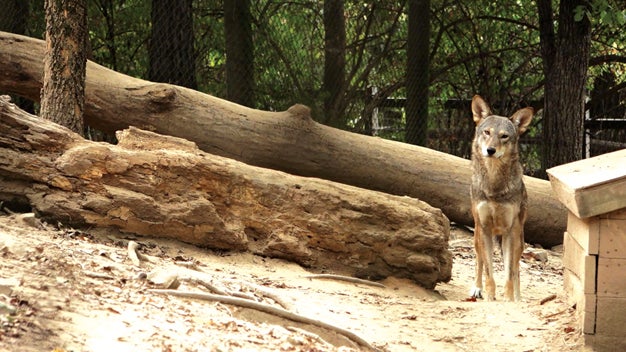East Tennessee Outdoors… The return of the Red Wolf
Published 1:35 pm Friday, July 31, 2020
|
Getting your Trinity Audio player ready...
|
BY DANNY BLEVINS
STAR CORRESPONDENT
A hundred and fifty years ago, the mournful cry of the red wolf could be heard throughout the mountains on long winter nights.
The red wolf, which has been called the “American Wolf” because it has never been found in Canada or Mexico, but only in the lower 48 states, filled these mountains and hollows. They killed game and prospered.
Time progressed, and farmers saw what these wolf packs were doing to their cattle and sheep herds.
The wolves worked together well in packs. Usually, one animal would distract a cow, sheep, or goat mother while the rest of the pack would run in and grab her baby calf, goat, or sheep.
Fast forward to today, and all of the red wolves are gone.
Killed or driven from this area by overhunting, the red wolves’ numbers have dwindled to 250 animals left in the world, and a majority of them are in zoos and animal parks.
There is a small population along the coast of North Carolina, but as a whole, the red wolf has been placed in zoos to try to save the species.
The U.S. Fish and Wildlife Service (FWS) put the red wolf on its endangered species list in 1967. In 1980, it took the drastic step of capturing all remaining red wolves from the wild in Texas and Louisiana in order to breed them in captivity.
When the red wolf’s numbers were strengthened through captive breeding, the first family was released back into the wild in 1987 along the coast in North Carolina.
In 1991, the program to save red wolves found another place to try to let them roam free. That place was the Great Smoky Mountains National Park.
During November of 1991, a family of red wolves was released into the park. In 1992, two more families were released, one in Cade’s Cove and one in Tremont.
Then the problems began. Some of the wolves would not stay in the park boundaries and started roaming and causing trouble for local farmers and ranchers.
One wolf made it as far as northern Knoxville, more than 40 miles away.
Several of the wolves died by unknown means. One died after drinking anti-freeze from under a truck.
A bigger problem was that the wolves were not reproducing.
While the wolves were in the park, they had a total of 40 pups, but all of them died of the parvovirus. When you have a population of animals that are no longer reproducing, the population will not last long.
Then came the problem that would cause the end of the red wolf in East Tennessee – coyotes came back to the mountains.
A coyote competes with a red wolf for food and habitat anywhere they are found together.
In fact, a coyote will even interbreed with a red wolf. Their offspring has a reddish tint to its fur, and most of the time, you can tell the offspring from a regular coyote pup.
A decision was made to cancel the project. Soon, all but one of the wolves were caught and moved to zoos where they could be monitored and hopefully reproduce.
Now the red wolf is gone once again from the East Tennessee mountains.
This time I feel they are gone for good. A part of me knows that there really is no place for them in the world we live in.
Our society and their habitat have changed enough so that the red wolf can never fit into their old hunting range again.
But there is another part of me that feels we are a little less without them.
Their mournful howl echoing through the mountains is something I would like to hear in my lifetime. Regrettably, it will never happen, and I am less for it.






